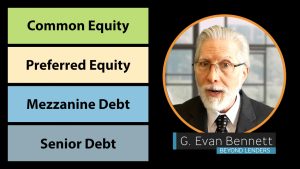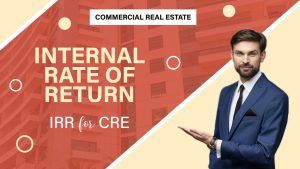Learn how less risk, stable returns, and improved diversification make debt investing a smart move for savvy investors.
Objectives
- Distinguish between real estate equity and debt investing.
- Understand the key advantages of real estate debt investments.
- Consider how you can become a lender.

Listen to This Article
Some investors limit their understanding of commercial real estate investments to equity positions. They assume the only way to invest is to buy a property, either alone or with others. That’s certainly one way to do it, but it’s not the only way. Instead of investing in real estate equity, you also have the option of investing in real estate debt.
Alternative Lenders Grow Market Share
Real estate debt investors are essentially lenders. They provide financing, either directly or through investment in debt funds, to borrowers in exchange for interest payments and the promise of principal repayment. That financing, which is secured by commercial real estate, was traditionally provided by banks and insurance companies. The regulatory and other industry changes that followed the Great Financial Crisis, however, have made it increasingly difficult for traditional lenders to originate commercial real estate loans at previous volumes. As a result, alternative lenders continue to grow their market share of this multi-trillion-dollar asset class.
As an investor, why should you consider investing in real estate debt? In other words, why should you become a lender? Real estate debt investing has a number of key advantages that have helped an ever-growing community of savvy investors to protect and grow their wealth. Let’s consider just a few of these advantages.
Less Risk in Real Estate Debt Investing
First up, debt investing in real estate is generally considered less risky than equity investing. Lenders are not directly exposed to the operational risks associated with property ownership, things such as prolonged vacancy, spikes in operating expenses, or property damage. Instead, their concern is solely that borrowers pay as agreed, and debt has historically exhibited stable performance, even during periods of economic volatility and downturns in the real estate cycle. This is largely the result of prudent underwriting. A carefully considered and planned credit box employs underwriting criteria such as loan-to-value and debt-service coverage ratios to factor a certain amount of wiggle room, so to speak, into a loan prior to origination. Furthermore, the balance of power is very much in favor of lenders. In the event of default, debt investors have the right to foreclose on a property to recoup their investment, while equity investors in that situation take a loss.
Steady and Predictable Income Stream
Another advantage to consider is the steady and predictable nature of the income stream. Real estate debt investments provide lenders with a fixed return that’s based on the interest rate of an underlying loan. Depending on how it’s structured, this fixed rate of return will typically be paid out either monthly or quarterly. Regardless, the frequency of the payouts, as well as the amount received each time, are consistent. Real estate debt has also historically offered higher yields than other fixed-income instruments such as Treasury bonds and investment-grade municipal and corporate bonds. These factors make real estate debt investments an attractive option for investors seeking a reliable source of passive income with regularly recurring payouts.
Improved Asset Allocation
One other advantage we’ll consider is diversification. Real estate debt can play an important role in asset allocation due to its low-to-moderate correlation against all major asset classes and economic indicators. Surprisingly, even its correlation with real estate equity investments is low. When investors add real estate debt to their portfolios, it helps buffer against potential losses in other asset classes and, perhaps more importantly, provides an effective hedge against volatility in the general economy.
How To Be the Lender
As a lender, there are basically two ways to add real estate debt to your portfolio. You can either originate the loans yourself or you can invest in debt funds. Either way you go, it’s always advisable to further mitigate risk by investing across multiple loans, thereby reducing exposure to any one borrower or property. This is more easily accomplished through investment in debt funds, which are typically backed by a book of loans representing a variety of property types, geographies, maturities, and loan structures.
As you can see, real estate debt is a relatively low-risk investment that provides consistent and reliable returns. It also makes for an effective way to mitigate risk and increase the overall stability of any investment portfolio. In considering these advantages, you’ve greatly expanded your understanding of real estate investing, well beyond that of many other investors.



















